Text


Text

Text

Text

Text

Text

Text

Text

Text

Text

Text

Text

Text

Text

Text

Text

Text

Text

Text

Text

Text

Text

Text

Text

Text


Text

Text



Text

Text


Text

Text

Text

Text

Text

Text

Text

Text

Text

Text

Text



Text



Text

Text


Text


Text




Text


Text

Text

Text

Text


Text



Text

Text

Text

Text

Text



Text

Text





Text

email: indigostreetpottery@me.com








Text

Text



Text

Text





Text
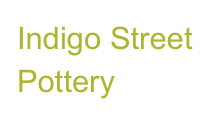







October 2011 Newsletter
Indigo Street Pottery Newsletter
Welcome to our monthly newsletter! It is part of our website indigostreetpottery.com , which you can browse from this page if you click on the subjects in the header. We write here about our studio, arts events, projects, studios of our friends, garden musings, and whatever else strikes our fancy. Hope you enjoy it!
August 13, 2011: 2011 Annual Art Auction, Anderson Ranch Art Center, Snowmass, Colorado www.andersonranch.org
May of 2012: Jeff Reich and Farraday Newsome, 2-person exhibition, Plinth Gallery, Denver, Colorado http://plinthgallery.com/
1 Indigo Street Pottery Calendar
2 J

Text

Text

Text

Text

Text



Text

Text





Text

email: indigostreetpottery@me.com








Text

Text



Text

Text





Text
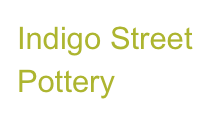
email: indigostreetpottery@me.com







email: indigostreetpottery@me.com
January 2018 Newsletter
Indigo Street Studio Newsletter
Welcome to our monthly newsletter! It is part of our website indigostreetpottery.com, which you can browse from this page if you click on the subjects in the header. We write here about our studio, arts events, projects, studios of our friends and garden musings.
Indigo Street Studio Calendar
1
In this Issue
1. Indigo Street Studio Calendar
2. 39th Annual Contemporary Crafts, Mesa Contemporary Arts Museum, Mesa, Arizona
3. Going Once, Phoenix Art Museum Contemporary Forum Dinner Art Auction
4. Bottoms Up!, Santa Fe Clay Gallery, Santa Fe, New Mexico
5. A Shared Passion: Ceramic Art from the Sky Harbor Airport Museum Collection
6. Indigo Street Studio Travel Note: Provence, France
7. Indigo Street Studio Kitchen Garden
6
Indigo Street Studio Travel Notes:
Provence, France
4
Bottoms Up! Santa Fe Clay Gallery Santa Fe, NM
7
Indigo Street Studio Kitchen Garden
5
A Shared Passion: Ceramic Art From the Phoenix Airport Museum Collection
3
Going Once, Phoenix Art Museum Contemporary Forum Dinner Art Auction

This month’s newsletter features travel notes from our recent time in Arles, a town in the Provence region of France and once an important part of the Roman Empire.
Photo above: The formidable Roman Coliseum in downtown Arles is nearly two thousand years old. During medieval times this structure contained several villages seeking protection within its mighty walls.
Happy New Year!
August 26, 2017 - Summer 2018: A Shared Passion, Phoenix Airport Museum, T-4 Level 2, Phoenix, Arizona
September 29, 2017 - January 21, 2018: The Art of Healthy Living, i.d.e.a Museum, Mesa, Arizona
November 17, 2017 - January 13, 2018: Bottoms Up!, Santa Fe Clay Gallery, Santa Fe, New Mexico
January 20 - April 19, 2018: Docents Select VII: Works from the Permanent Collection, Mesa Contemporary Arts Museum, Mesa, Arizona
February 9 - April 15, 2018: 39th Annual Contemporary Crafts, Mesa Contemporary Arts Museum, Mesa Arts Center, Mesa, Arizona. Opening reception February 9 at 6pm.
2
39th Annual Contemporary Crafts, Mesa Contemporary Arts Museum
Jeff Reich and Farraday Newsome will each have work in the nationally juried 39th Annual Contemporary Crafts exhibition at the Mesa Contemporary Arts Museum.
Mesa Contemporary Arts Museum is the visual art exhibition space at Mesa Arts Center in Mesa, Arizona. The MCA showcases curated and juried exhibitions of contemporary art by emerging and internationally recognized artists. Highlighting the finest in contemporary crafts from across the country, Mesa Contemporary Arts Annual Contemporary Crafts exhibition has become a benchmark for innovation and quality.
This year’s show was juried by Bruce Hoffman, Director of Gravers Lane Gallery in the historic Chestnut Hill area of Philadelphia. The exhibition will showcase 51 artworks by 46 artists, representing 16 states. Arizona artists include ourselves, Carol Alleman, Jesse Berlin, Nicholas Bernard, Michael Cajero, Tatiana Fitzpatrick, Marla Hattabaugh, Jeff Heeg, Suzanne Hesh, Elliott Kayser, Jane Kelsey-Mapel, Laura Korch, Patricia Manarin, Robert Michaelski, Cynthia Miller, Sherie Monsam, Jason Ripper, Kazuma Sambe, Clare Verstegen, and Steve Wolf.
Where: Mesa Contemporary Arts Museum, Mesa Arts Center, One East Main, Mesa AZ 85211
When: February 9 - April 15, 2018. Public reception 7-10pm February 9, 2018
For more information click here
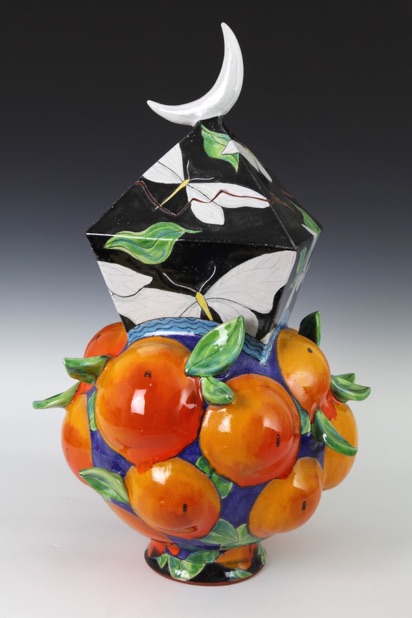
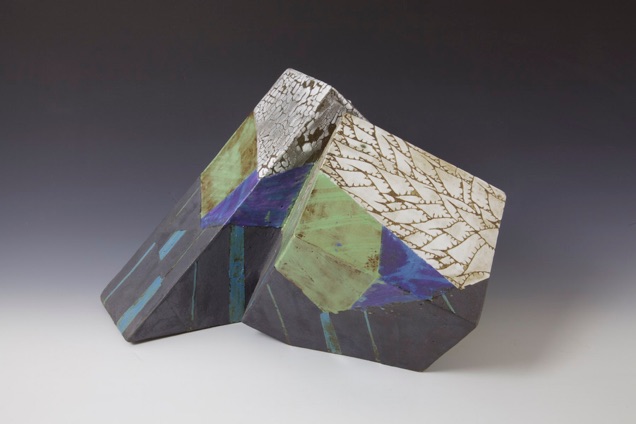
Jeff Reich, Agave Fields, stoneware, 10 x 12 x 14”, 2017
Farraday Newsome, Luminous Night, glazed terra cotta lidded jar, 22 x 14 x 14”, 2015
The Contemporary Forum of the Phoenix Art Museum is resuming its annual Dinner Art Auction! Farraday Newsome’s wall-hanging Garden Tile will be in the Silent Auction. For more information on this event: click
Tickets are $250 and will be available for purchase at tickets.phxart.org. All funds raised directly support contemporary art at the Museum.
For questions, please call 602.307.2029 or email support-cf@phxart.org.

Farraday Newsome, Garden Tile, glazed terra cotta boxy wall tile, 12 x 12 x 4.5”
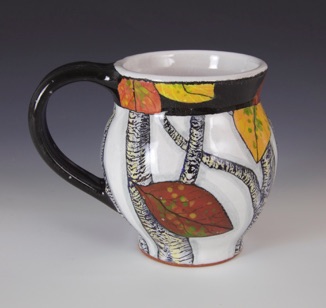

Santa Fe Clay Gallery is currently exhibiting a large cup show that includes these two cups by Farraday Newsome. Dark Blue Cup with Oranges is 4.5” tall and Black and White Cup with Birches is 4.75” tall. Both cups are glazed terra cotta, 2017.
The Santa Fe Clay Gallery is part of Santa Fe Clay, a large ceramics-dedicated space in the Railyard Arts District of Santa Fe. It houses a large classroom space, kilns, artist rental spaces, a retail supply and materials store, and the retail gallery. http://www.santafeclay.com
Where: Santa Fe Clay, 545 Camino de la Familia, Santa Fe, NM
When: November 17, 2017 - January 13, 2018

Where: Phoenix Airport Museum, Sky Harbor International Airport, Terminal 4, Level 2, Phoenix, Arizona
When: August 26, 2017 - Summer 2018
The Phoenix Airport Museum was separately gifted two large collections of contemporary ceramic artwork from two collectors in 2016: Joan Lincoln and Billie Jo Harned.
This current exhibition, A Shared Passion, features a selection from these acquisitions and includes works by Farraday Newsome, Les Lawrence, Esmeralda DeLaney, Nick Bernard, and Bennett Bean.
Phoenix New Times art writer Lynn Trimble has written an article titled Phoenix Sky Harbor Airport Art: A Field Guide, November 21, 2017 that guides a viewer through the airport’s current exhibitions. To read the article click here
http://www.phoenixnewtimes.com/arts/phoenix-sky-harbor-airport-art-9856967


photo credit: Phoenix New Times












This month’s newsletter continues the travel notes from our recent trip to France. Last month we wrote about Paris and now we share photos and thoughts from our time in Provence.

We stayed in Arles, Provence, a region of southern France. Arles was an important city in the Roman Empire, a key stop on the Roman road from Italy to Spain. It is marked by narrow, medieval cobbled streets and the signature lavender shutters of Provence. We saw magnificent Roman ruins here. The town is dominated by a large Roman coliseum at its center that once held 20,000 Roman spectators. It has been extensively restored and is used for a variety of events. We explored the coliseum the first evening we were in town and had this amazing site virtually to ourselves.
St. Trophime Church faces Arles’ main plaza. It has a highly-detailed Romanesque exterior and an interior with both Romanesque and Gothic features.
The 80-foot high stone arches of the bridge supporting the aqueduct were ingeniously fitted with protruding stones, allowing scaffolding to be erected and secured when repair work was necessary. Many of the massive stone blocks of the immense bridge were safely secured by impressive lock-and-key stone cuts.
Arles is at the junction of two French portions of the Camino de Santiago (Pilgrimage of Campostela) trails en route to Spain. The St. Trophime church has large posters with information about this pilgrimage.
The Cloisters, attached to St. Trophine Church, are lovely and fascinating. These delicate, narrow columns ring the perimeter of the arcaded inner garden and were scavenged from ruins of the nearby Roman theater.
The hanging tapestries inside the Cloisters were impressive. We were also moved by the pure, soft natural light in the main hall, made even more tranquil by the lack of other tourists (that’s Jeff in the photo).
The stained glass windows on the second floor of the Cloisters are stunningly beautiful with their color and simplicity.
Here are two more of the exquisite stained glass windows set into the very thick walls of the Cloisters of St. Trophime. The windows in this not-very-famous cloister were among the favorites of our entire trip.
Arles is also renowned for being a town in which Vincent van Gogh once lived and painted. Citizens of his time demanded that van Gogh spend his nights in Arles’ local hospital, photo above, under doctor’s supervision since he was impossibly unruly and difficult after dark. There is general consensus that van Gogh suffered bipolar disorder. During the daytime he was allowed to wander freely, painting in town and throughout the nearby countryside. Van Gogh liked painting in this inner garden of the hospital, now the Vincent van Gogh Cultural Center.
We spent one day in Provence renting a car and driving to the magnificent Roman aqueduct at Pont du Gard. It was built in 19 BCE to bring water to the town of Nimes and is now one of the most significant ruins from the Roman Empire. Tourists may walk across the massive bridge that supports the structure, and there are trails up the hilly banks on both sides of the river for incredible views. We were awed by this view from the highest point we could find.

Photo to left: We were given seeds of large-leaved Tronchuda Portuguese Kale by an elderly Portuguese man in California who emigrated from the Portuguese Azores when he was young. A dedicated gardener, he continues to save seeds of this heirloom kale. Tronchuda Kale is a key ingredient in traditional Portuguese Caldo Verde, a mashed potato, kale and sausage soup.
Photo to right: With only two nights of light frost so far this winter, it has been the warmest winter we can remember. We understand that gardeners in other states grow everything in one long growing season (summer), but with our searing summers we have two shorter growing seasons: fall and spring. Usually our heat-loving vegetables (tomatoes, peppers, cucumbers, basil and the like) have succumbed by now to frost, giving way to cool-season, frost-tolerant winter vegetables like kale, chard, lettuces, and beets. This year a covering of frost cloth on the two chilly nights has resulted in summer vegetables that are still alive and growing, sharing the garden with young winter vegetable. Tomato plants are growing and fruiting among kale, basil is competing with pak choi, and arugula is elbowing nasturtiums. Summer sunflowers still tower over all, an odd sight, but a welcome winter source of food for the bees.
It is a pretty look, but unsettling. We’ve heard that this year’s winter weather is a result of the La Niña (a periodically recurring, warm, dry weather pattern that originates off the western coast of South America) combined with general global climate change and warming.

